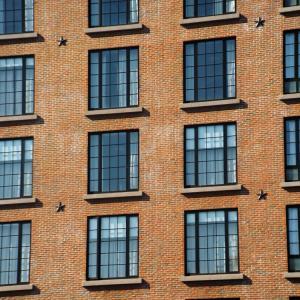
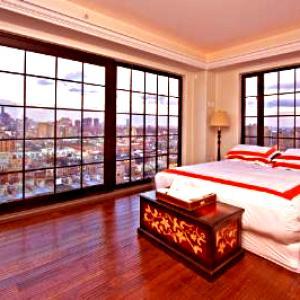


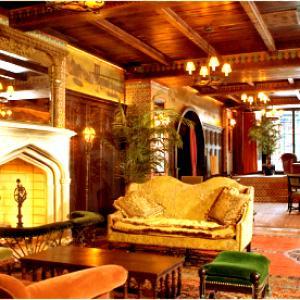
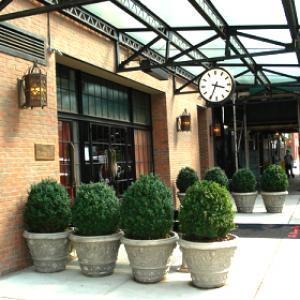
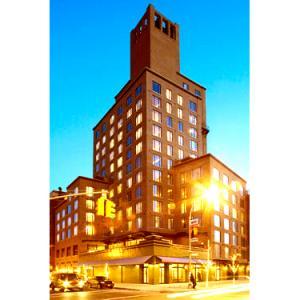


Project Manager/Designer: Tamar Kisilevitz
Visit: https://www.theboweryhotel.com
The commercial / retail components are located on the cellar, first and second floors, supporting a hotel building flanked by the ten story residential tower above. Additional uses include large roof terraces for the guests and residents and generous corridors and lobbies for the hotel portion. The basic principles that informed the design for the Bowery Tower were: -The creation of a focal point for a prominent intersection along New York's famed Bowery. -Tying this relatively large building into the vibrant neighborhood that surrounds and supports it. -Providing a variety of open spaces that maximize panoramic views of New York City. -Floor layouts that maintain a level of control and direction for future growth.
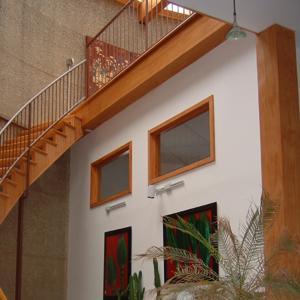
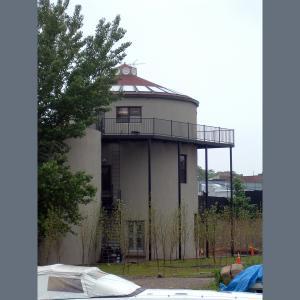
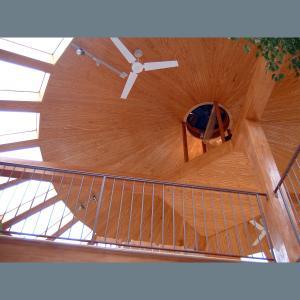
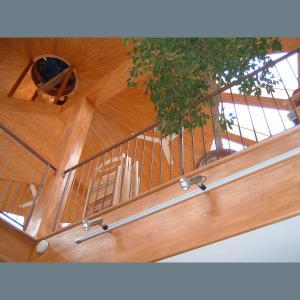
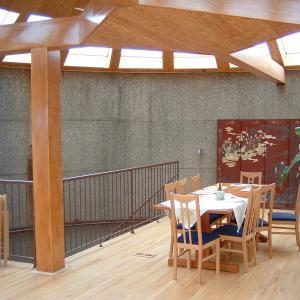

Project Manager/Designer: Tamar Kisilevitz
Visit:
The design concept started from the analysis of the lifestyles of the two occupants; one welcomes people from the outside, but needs privacy once they are inside and the other is self-contained, but seeks stimulation from external sources. Inspiration was drawn from the inherent beauty and simplicity of the 6-inch thick exposed concrete walls, and the proximity to the canal and the Carroll Street Bridge as emotive elements, tying the project into a non-conventional landscape. The ultimate use of the space dictated varied treatments to the two silos; for the smaller one, partitions are removed from the perimeter to form a central service core, with the main spaces open to each other around the space. As the tanks were previously topless, a flat roof was built over the small silo that would provide a roof terrace for the writers studio, and a cylindrical sloping roof was built for the large silo with an elaborate ventilation system and wedge-shaped operable skylights that create a continuous flood of light overhead. Wooden rafters radiating from the centre outward provide the structure for the new roof. Prior to any construction, the silos were de-contaminated; thus, the structures were retained without having to provide additional exterior or interior coatings. Throughout the revamping of the once unused oil tanks, this project presents a successful new approach toward preservation of structures that might have otherwise been lost through unnecessary demolition.
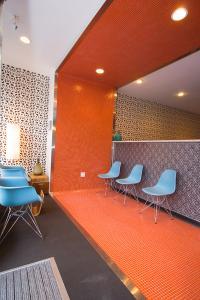
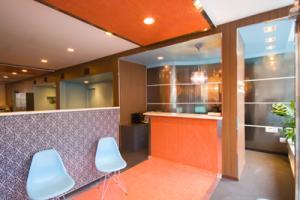
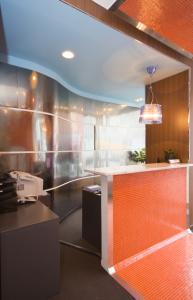
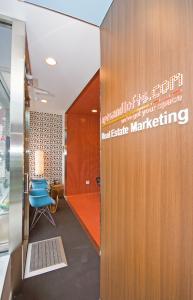
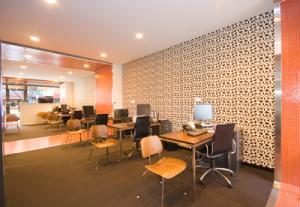
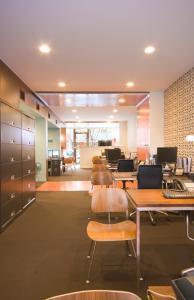

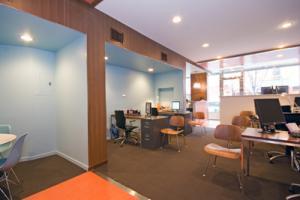
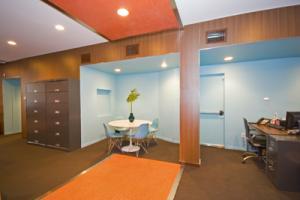
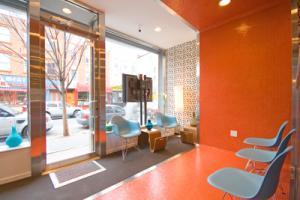

Project Manager/Designer: Eugene Drubestskoy
Visit: www.aptsandlofts.com
The design for the company's second location draws inspiration from the firm's logo, specifically its orange color and pixilated font, which was translated into freestanding elements in the space.
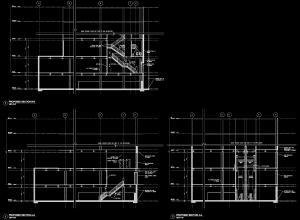
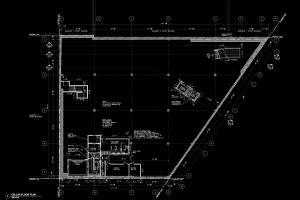
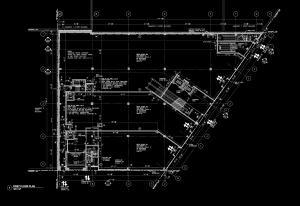
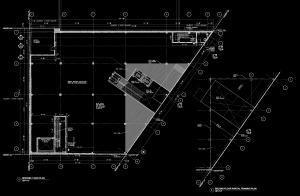
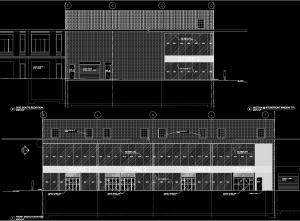

Project Manager/Designer: Mary Butterworth
Visit:
Renovation of an existing retail complex, upgrading it for use by a wider range of tenants for longer periods of time.
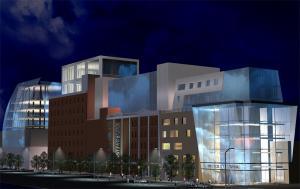
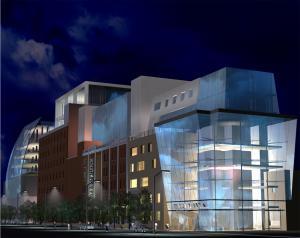
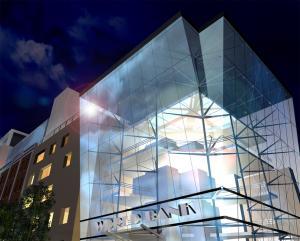
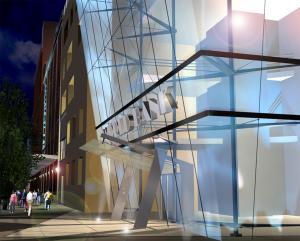

Project Manager/Designer: Stephen Conte
Visit:
Bringing life to a desolate industrial block is always a challege. The conceptual urban masterplan for this large parcel constitutes the feasibility study for the modernization and re-use of an entire industrial block on the industrial outskirts of the historical Clinton Hill neighborhood and in close proximity to the Brooklyn Navy Yard as a commercial complex by examining the physical and financial possibilities of converting multiple abandoned warehouses into a unified mixed-use complex of commercial, industrial, storage and public facilities. The concept for this project, because of the massive scale and impact, was to create a linear promenade that could visually unify hall from Flushing avenue to Park Avenue, and conceptually relate it to the lively, booming myrtle avenue. This allows for the flow of pedestrians along a safe route to the once desolate area. the incorporation of a major bank and retail venues will also encourage the migration of more residents to this area, further transforming the neighborhood, while keeping true to its industrial roots.
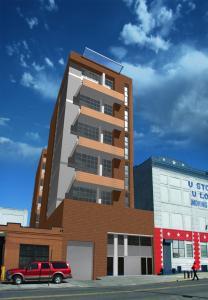
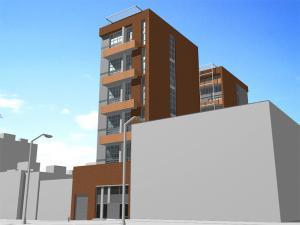
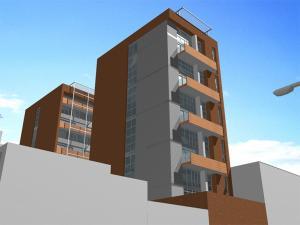

Project Manager/Designer: Roberto de los Rios
Visit:
A through-lot (fronting on two streets) developed into two sculptural 125 foot high towers that are separated by an interior courtyard. These buildings stand alone in a low rise manufacturing area and offer multiple views of the city due to their height advantage.
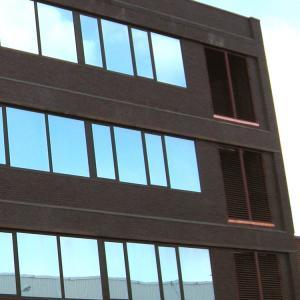
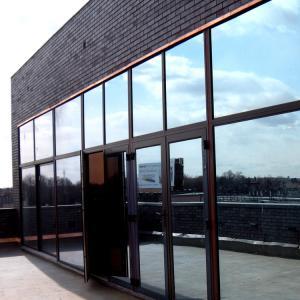
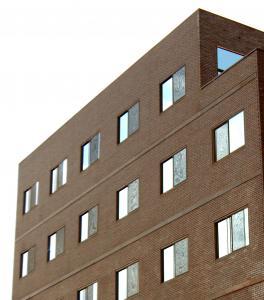
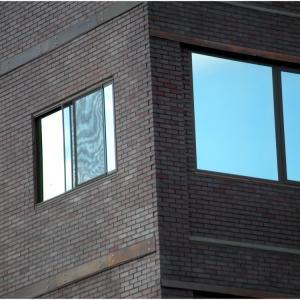
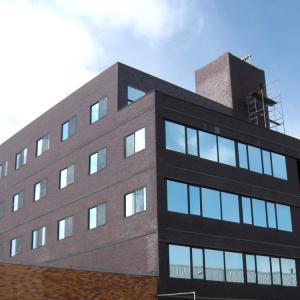

Project Manager/Designer: Mary Butterworth, LEED AP
Visit: http://www.aldonafire.com
The aldona fire protection headquarters is the future home of a major New York fire alarm company. As such the program must include work stations for the entire staff, offices for managers, much needed storage space, parking and service areas. While the interior accommodates all these requirements, the exterior of the building acts as a symbol for the company's commitment to making New York a safe and efficient place. A soaring, sloped roof will be covered entirely with solar panels that constitute the primary source of energy for the building's electricity. Large louvers on the intricately detaild facade will provide natural ventilation zones to reduce the amount of mechanical equipment in the building. The design complies with the requirements for a green building, and will qualify for LEED certification when completed.
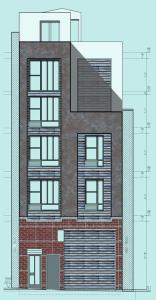

Project Manager/Designer: Robert M. Scarano Jr.
Visit:
Evidence of the pre-existing parti wall proves that there used to be a 4 story building on this site. Working with the structural engineer and client to develop a scheme with minimal intervention to the site and business made this project unique to our office. The concept for the exterior is to weave the skin of the existing building into the addition by using the corrugated metal to frame the windows. The articulation of the header coarse of the existing brick wall, allows the presence of the addition to sink into the base and become part of the rhythm that drives the proportion of the elevation. The proposal bridges the gap between the parti walls of the adjacent buildings and fills the void of a memory lost.
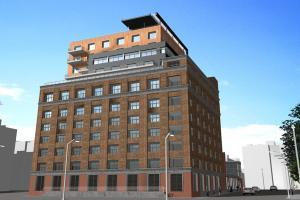
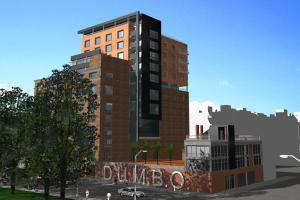
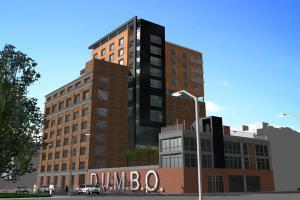
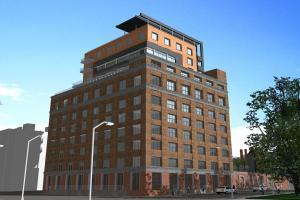
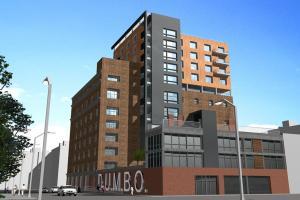

Project Manager/Designer: David Blaustein
Visit:
Most industrial buildings were constructed either for factory uses or heavy loading as warehouses. Since these uses no longer represent the best use for owners, the zoning resolution recognizes the support required to continue these uses and allows owners to expand existing non-complying buildings, but only up to 50% of their existing floor area, regardless of the floor area permitted by the underlying zoning district. Many buildings are now taking advantage of these provisions to allow for a higher return and increase the lower rental value. Adding floors to these types of buildings can be tricky because of the present day building code requirement for compliance with seismic design. The connection between old and new and the enhancement of the existing structure is typically mandated by these additions. A rigid core running from old to new and diagonal interior bracing allow both structures to act as one and resist wind forces and other load factors. The look of a new five story mass topping the existing building is controlled by the zoning resolution's sky exposure plane and by aesthetic considerations relating to that much bulk over an existing structure. By extending the addition along the side of the existing building as well as the top, the two begin to blend. With fenestration that matches the existing buildings openings, the addition appears to be a completion rather that an addition. Clean lines with exterior balconies and trim further unite the two structures and the signage from the street level reminds passerby's where they are in a big way.